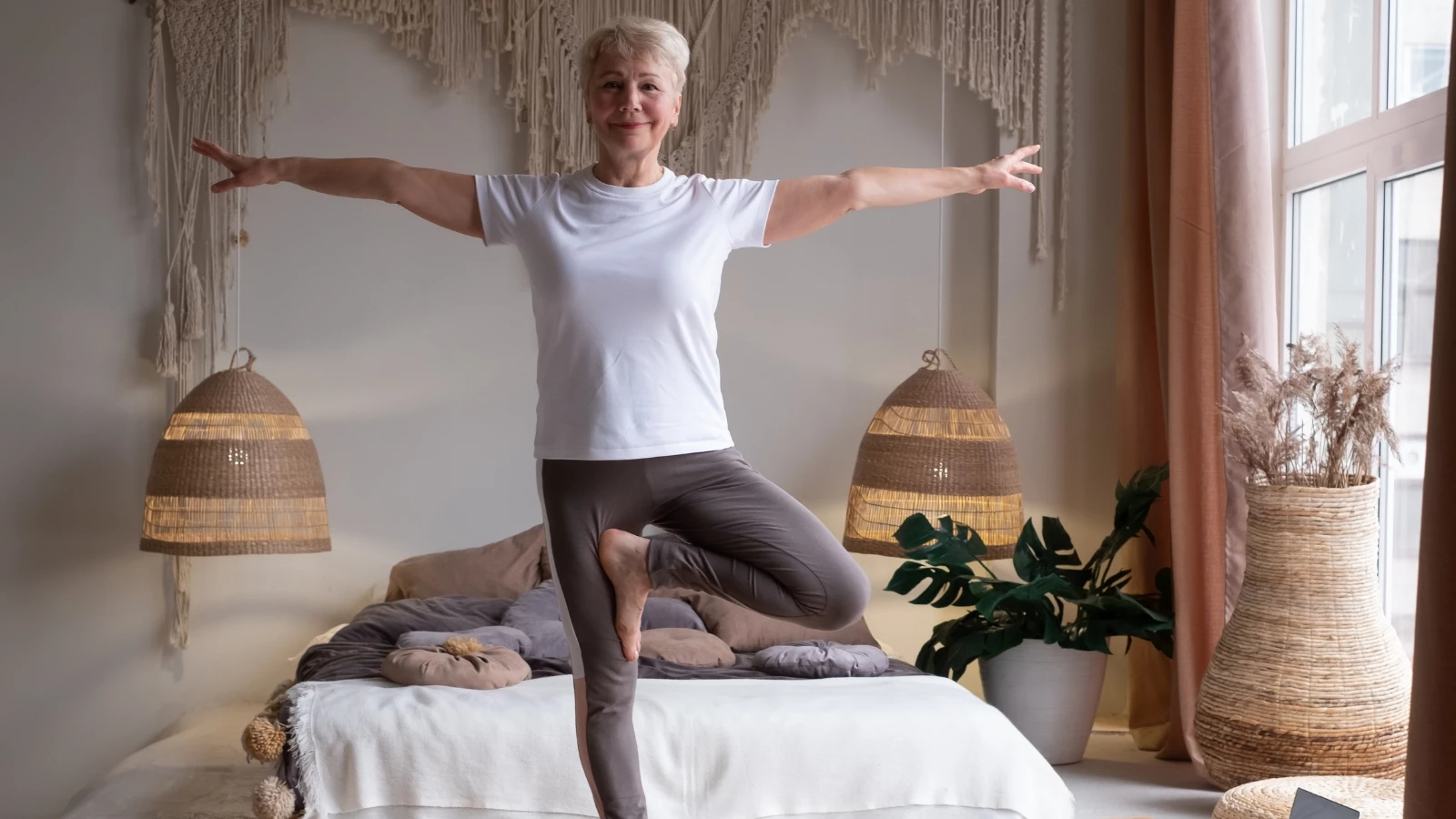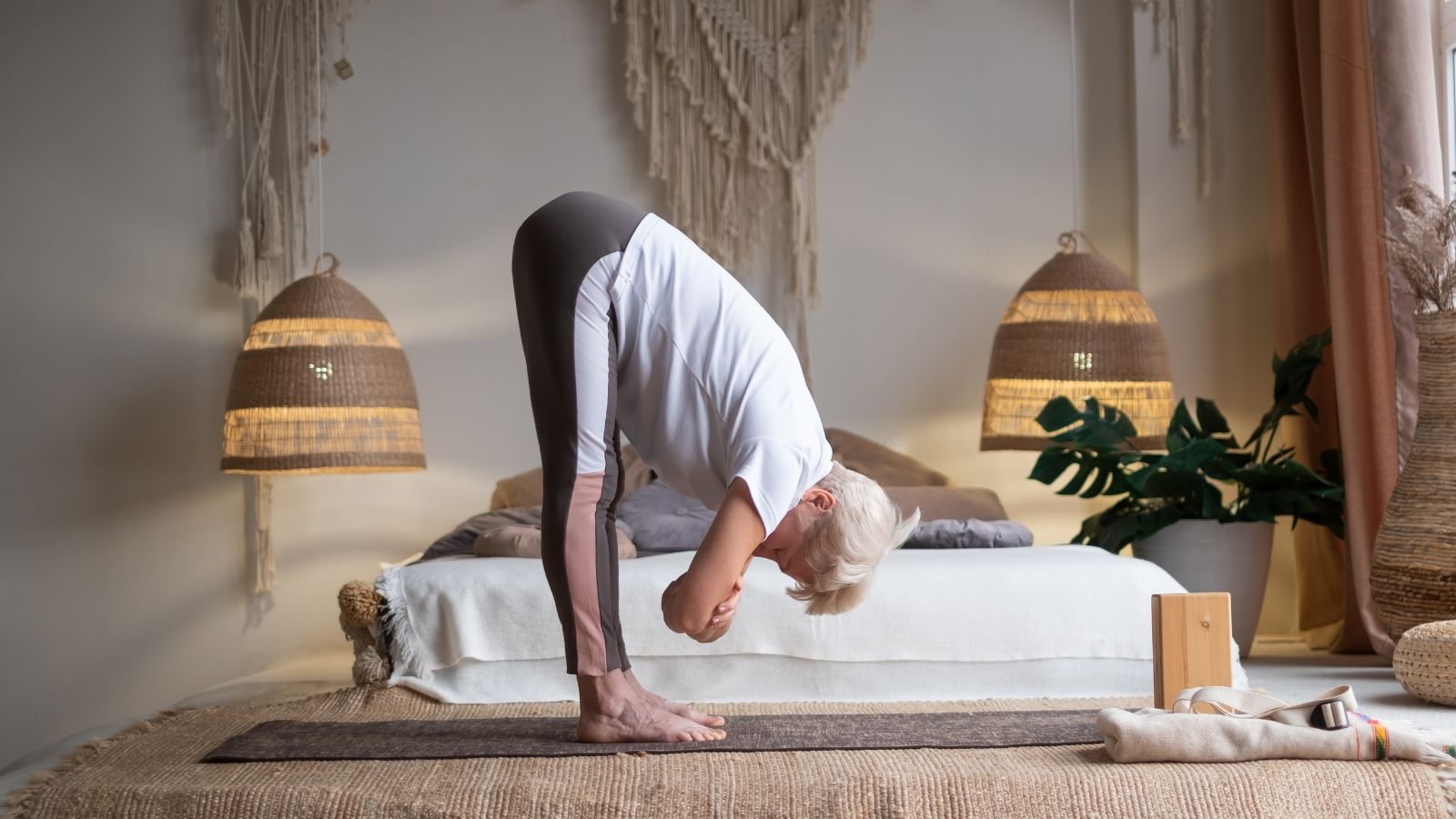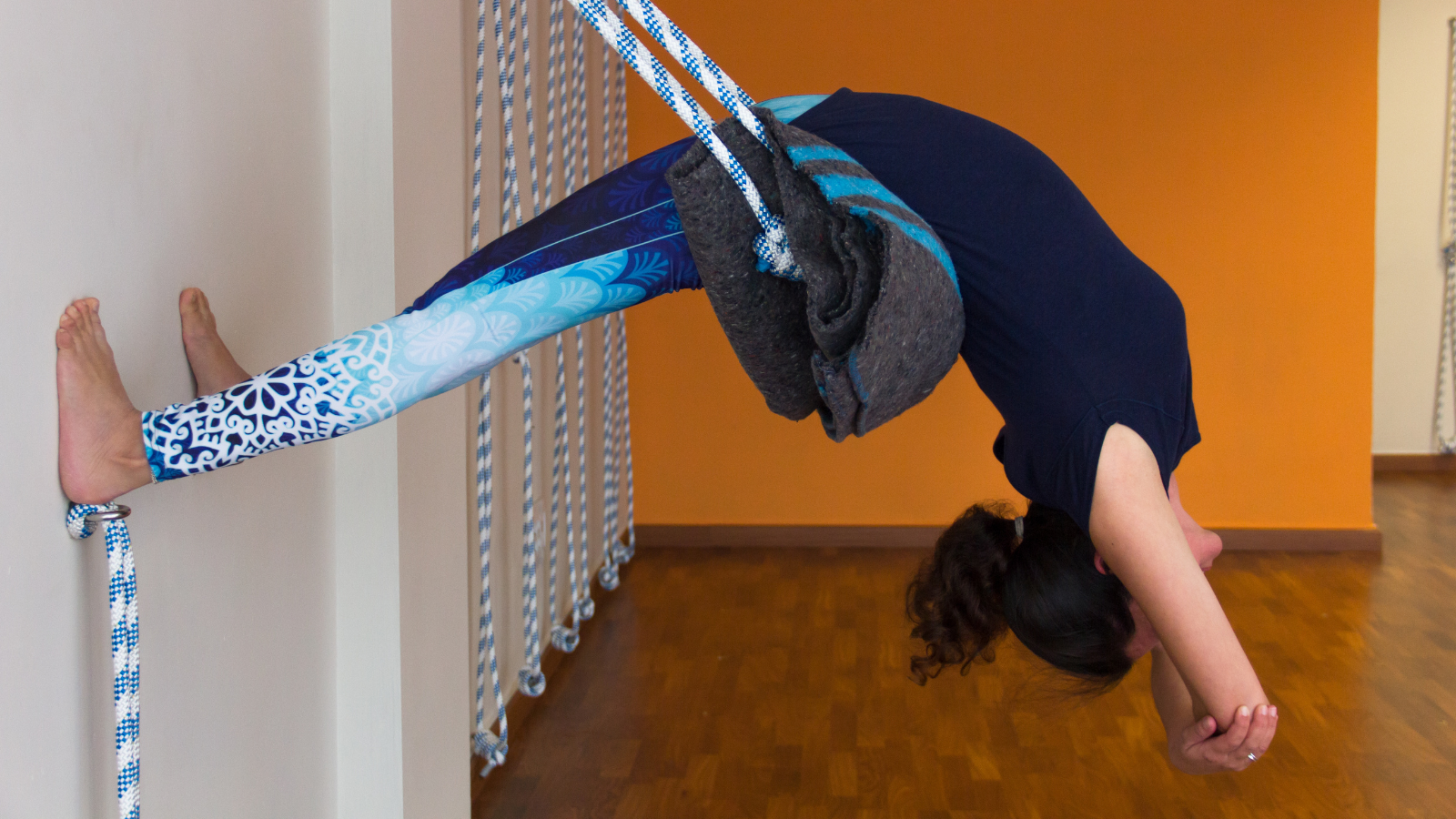4 Ways to Maximize Vestibular Input in Yoga

Article At A Glance
In my mid-’70s, my balance is above average. I barely waver in Tree Pose (Vrksasana). I have years of yoga to thank for that. Few activities fortify the balance system more than hitting the mat. Think of all the yoga asanas that force us to lift our bodies against gravity. In addition to balancing poses like Warrior III Pose (Virabhadrasana III), there’s Boat Pose (Paripurna Navasana), Bow Pose (Dhanurasana), Bridge Pose (Setu Bandha Sarvangasana), Cobra Pose (Bhujangasana), Upward Bow Pose (Urdhva Dhanurasana) and many more. Yet yoga’s role in improving balance is far greater than we might realize. Yoga practice provides vestibular input, which may be a crucial key to wellbeing.
The vestibular system, located in the inner ear, governs balance. How important is the vestibular system? Supremely important. The vestibular system orchestrates the entire nervous system.
It controls the sense of balance (gyroscope), orientation (compass), and movement against gravity. It regulates muscle tone, motor control, and postural control; sequencing of movement, visual space perception, and visual-motor control; auditory language skills, emotional stability, clear thinking, and alertness.
The Science Behind Yoga Bliss

Yoga practice is a powerhouse in providing vestibular input. In yoga, the balance sense doesn’t just kick in from gravity-defying poses. It kicks in with every head change: from horizontal to vertical to angular planes; in and out of upright, inverted, prone, supine, or side-lying positions. We get linear movement from Downward-Facing Dog Pose Adho Mukha Svanasana) to Handstand (Adho Mukha Vrksasana), angular from Side Plank Pose (Vasisthasana) to Triangle Pose (Trikonasana), and rotary in twists. All these head changes alert the brain to change of position to maintain balance and perspective.
Think of taking a Zumba class. The head will remain upright most of the class. Now think of the head changes flowing through some of the poses in a Vinyasa:
- Upward Hands Pose (Urdhva Hastasana): Head back
- Standing Forward Bend Pose (Uttanasana): Head down
- Downward Facing Dog Pose (Adho Mukha Svanasana): Head down
- Eight-Limbed Pose (Ashtangasana): Head forward
Each head change lubricates the vestibular system. Upside-down poses especially enact a huge vestibular surge. If your morning Power Vinyasa class consisted of a Headstand (Sirsasana), Handstands, Crow Pose (Bakasana), and Firefly Pose (Tittibhasana), you might experience not only a deep state of yoga bliss, but feel settled for hours after class, think with greater clarity, and even feel a stronger sense of self.
Let’s explore.

Vestibular Input During Yoga Postures Improves Thinking
Yoga postures that challenge balance improves cognition: being more balanced on our feet translates to being more balanced in our brains. “Thinking on their feet” is how we describe articulate people with sharp thinking skills.
Science supports the connection between vestibular input and thinking. A study by researchers at the University of Illinois, published in 2014 in Consultant 360 found eight weeks of hatha yoga to improve cognitive functions of sedentary seniors. After a 20-minute yoga session, speed, and accuracy improved memory (particularly working memory).

Vestibular Input During Yoga Practice Reduces Stress Response
Vestibular input in yoga postures inhibits the HPA axis. The HPA axis represents the interaction of the hypothalamus, the pituitary, and the adrenal glands, and is our central stress response.
The vestibular system is a key player in inhibiting the HPA axis and in reducing stress. It does so because it weaves throughout the hypothalamus (the “master gland” that controls body temperature, hunger, thirst, fatigue, sleep, and circadian rhythms), as well as the amygdala (the fear center in the limbic system), turning on the parasympathetic calming mode to diminish the stress response.
At the same time, the breath and the focus on the present in yoga practice stop the brain from automatically invoking the stress response.
Vestibular Input During Yoga Practice Improves Sense of Self
The vestibular system impacts the sense of self. If we are grounded and balanced while walking the earth, we feel grounded and balanced in life. If we are ungrounded and wobbly, we feel emotionally “off-balance,” and suffer poor mental health. Depression, anger, fear, or hostility often result.
Such physical instability can erupt into anxiety disorders, including space-related phobias like fear of heights, fear of flying, claustrophobia, and panic attack. In fact, panic attacks and vestibular dysfunction share the same symptoms: dizziness, disorientation, lightheadedness, floating, faintness, nausea. Mentally, unsteadiness creates confusion, disorganization, spaciness, and poor memory.
How to Maximize Vestibular Input During Yoga Practice
The more head changes in a yoga class, the greater the vestibular input. Still, there are ways to enhance vestibular input even further.
1. Remove Support: Lift a hand up in poses like Triangle Pose, or leg out to the side in Cat/Cow Pose (Marjaryasana/Bitilasana).
2. Vary the Surface You Balance On: Practice yoga on an unsteady surface like grass, or at the ocean on the sand. Maintaining balance requires more strength, and we develop an “earthy” feel for the surface.
3. Hang Like a Bat: Hanging upside down is the quickest way to get quick, intense, and long-lasting vestibular input. In addition to poses in class like Headstands and Handstands, many props exist to help us hang freely like Batman.

- Yoga Inversion Sling: This is a sling hanging from a ceiling or stand that allows us to invert while sitting in it. It is the same apparatus used in aerial yoga.
- Yoga Hanging Wall: This is a sling attached to the wall. It is easier than the inversion sling as we can use the wall to get in and out of postures.
- Yoga Headstand Bench: This allows us to do a headstand without our head touching the floor.
4. Remove or Change Vision: Once we are comfortable in a balancing pose with eyes open, we can challenge balance by trying the pose with eyes closed. We can also keep eyes open but change head position—by looking up, looking down, looking side to side, or turning the head.
Choose Your Yoga Practice for Mental Clarity, Wellbeing, and Bliss
Choose yoga classes that maximize vestibular input and add some vestibular challenges if you wish for greater balance in life. The greater the input, the greater the possibility of yoga bliss, mental clarity, and overall wellbeing.
Also, read...
Dr. Ray Long: How to Enhance Your Breathing Capacity During Yoga
Yoga Anatomy: The Adductor Muscles in Downward Facing Dog Pose
Yoga Anatomy: Release the Internal Rotators for a Deeper Lotus Pose
Related courses
Breath as Medicine: Yogic Breathing for Vital Aging
Yoga and Myofascial Release: Releasing Chronic Tension with the Bodymind Ballwork Method

Sharon Heller, Ph.D. is an author, developmental psychologist, consultant for sensory processing disorder, long-time yogi, and artist. She is the author of Yoga Bliss, How Sensory Input in Yoga Calms and Organizes the Nervous System. www.sharonheller.net



